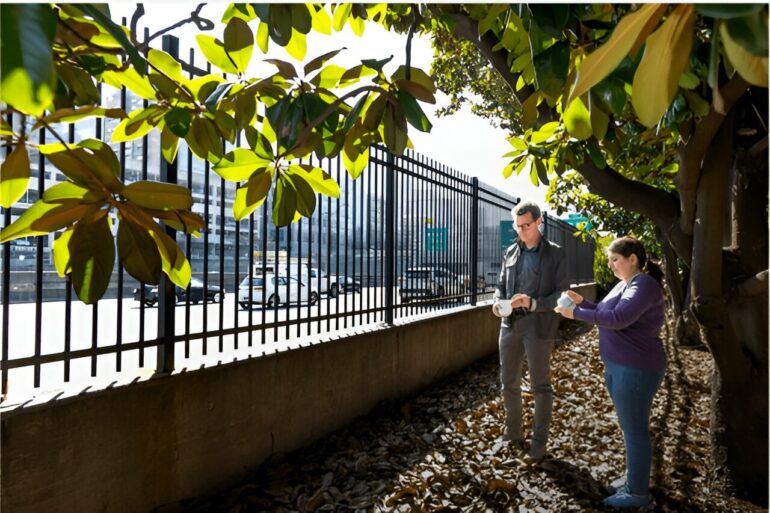Trees and bushes planted near highways do more than improve the scenery. A new Georgia State University study finds they significantly reduce air pollution caused by motor vehicles, which has been linked to a host of illnesses.
Over two three-month periods, researchers sampled air quality at five sites along metro Atlanta interstates and highways. When compared to similar sites without vegetation, the researchers found a 37% reduction in soot and a 7% reduction in ultrafine particles at sites with natural or ornamental vegetation. The findings appear in the journal PLoS One.
“Trees and bushes near roadways don’t solve the problem of air pollution caused by motor vehicles, but they can help reduce the severity of the problem,” said lead author Roby Greenwald, associate professor in the GSU School of Public Health.
A growing body of evidence has linked motor vehicle pollution to conditions such as asthma, chronic bronchitis, lung cancer and heart attacks. Solutions to the problem of elevated pollution levels near roadways are urgently needed, Greenwald and his colleagues noted, because 45 million people in the United States live, work or attend school within 300 feet of a major highway.
Roadside vegetation reduces air pollution through several mechanisms, including by creating a large surface area onto which small particles adhere. The new study builds on previous research into the role that vegetation can play in reducing air pollution by sampling at several sites over an extended period and incorporating a model that allowed the researchers to account for factors such as wind direction, traffic volume and distance to the highway.
Greenwald emphasized that while roadside vegetation can significantly reduce particulate air pollution, it doesn’t reduce carbon dioxide emissions or ozone pollution. He said that to achieve a more comprehensive reduction in the health hazards associated with highways, municipalities can improve air quality by making it safe, pleasant and convenient for people to get where they need to go without a motor vehicle. Changes could include expanding public transportation and developing and improving bicycle and pedestrian infrastructure, for example.
“We should plant more trees along roadways because they provide benefits that go beyond aesthetics,” Greenwald said. “But I don’t want to give anyone the impression that we can solve all of the problems associated with motor vehicle emissions simply by planting trees.”
More information:
Roby Greenwald et al, The impact of vegetative and solid roadway barriers on particulate matter concentration in urban settings, PLOS ONE (2024). DOI: 10.1371/journal.pone.0296885
Provided by
Georgia State University
Citation:
Trees, bushes near highways can significantly reduce air pollution, study finds (2024, March 19)



